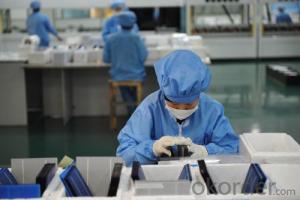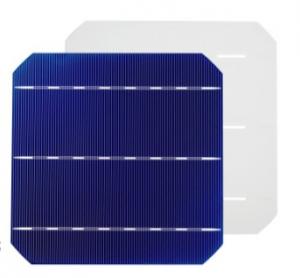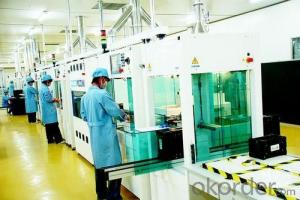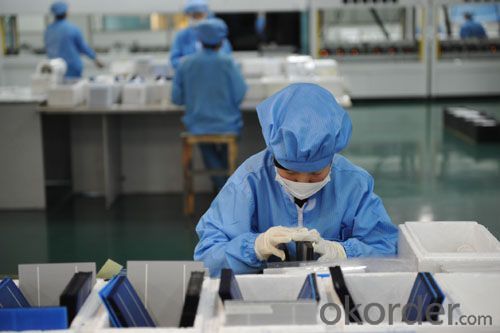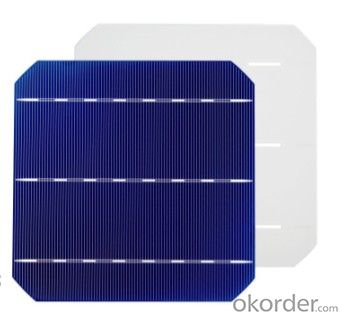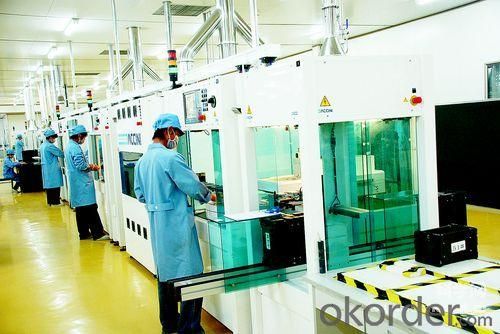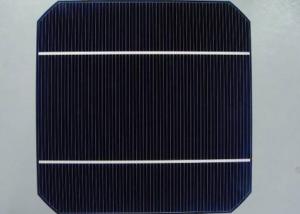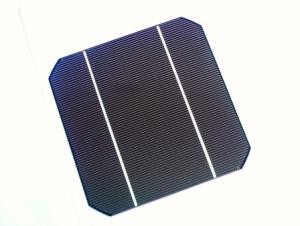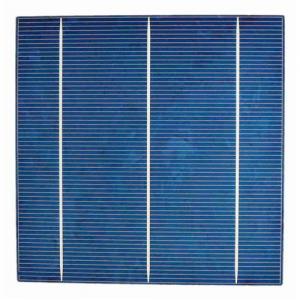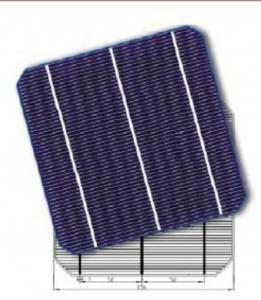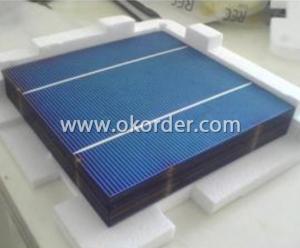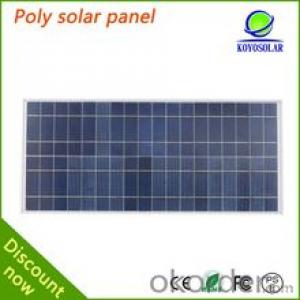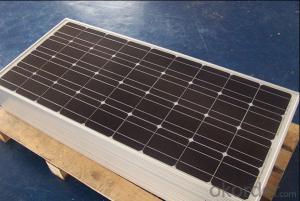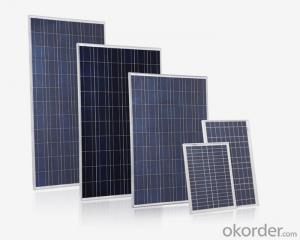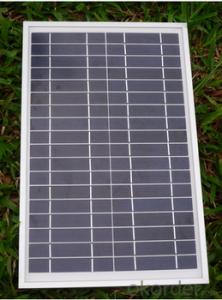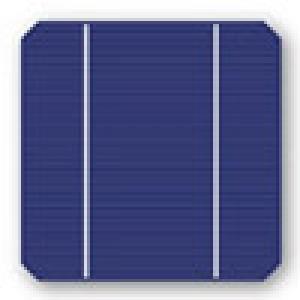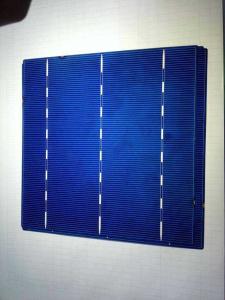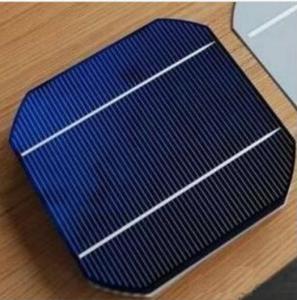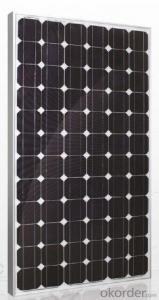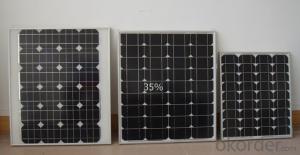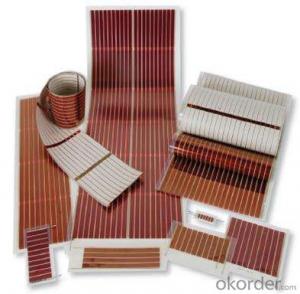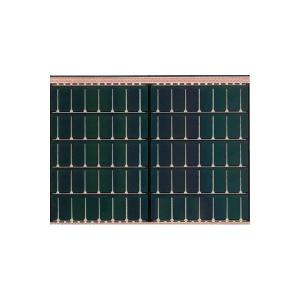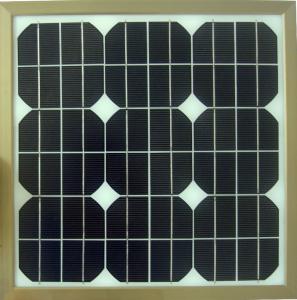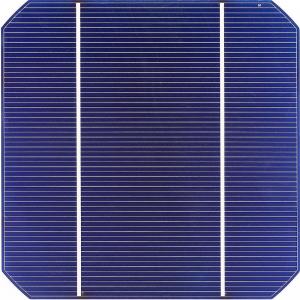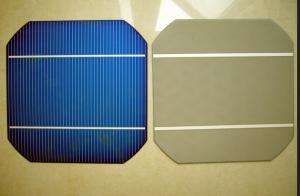Tongwei Solar Cells Monocrystalline PV Module Solar Cells
- Loading Port:
- China Main Port
- Payment Terms:
- TT or LC
- Min Order Qty:
- -
- Supply Capability:
- 1000000 pc/month
OKorder Service Pledge
OKorder Financial Service
You Might Also Like
Brief Introduction of Solar Cells
A solar cell, is an electrical device that converts the energy of light directly into electricity by the photovoltaic effect, which is a physical and chemical phenomenon. It is a form of photoelectric cell, defined as a device whose electrical characteristics, such as current, voltage, or resistance, vary when exposed to light. Solar cells are the building blocks of photovoltaic modules, otherwise known as solar panels.
Monocrystal Solar Cell
type:125S
appearance:125×125㎜±0.5mm;diagonal:R=82.5mm
Main fence wide:1.6mm;back electrode wide:2.5mm
Fence line qty:54(back connect line) 70(back connect line)
Cell thickness:220![]() ±20
±20![]()
Eff(%) | 17.30- 17.45 | 17.45- 17.60 | 17.60- 17.70 | 17.70- 17.80 | 17.80- 17.90 | 17.90- 18.00 | 18.00- 18.10 | 18.10- 18.20 | 18.20- 18.30 | 18.30- 18.40 | 18.40- 18.50 | 18.50- 18.60 |
Pm(W) | 2.68 | 2.7 | 2.72 | 2.74 | 2.76 | 2.77 | 2.78 | 2.80 | 2.82 | 2.83 | 2.85 | 2.86 |
Isc(A) | 5.57 | 5.58 | 5.61 | 5.63 | 5.65 | 5.66 | 5.68 | 5.70 | 5.71 | 5.71 | 5.73 | 5.75 |
Im(A) | 5.17 | 5.19 | 5.23 | 5.25 | 5.28 | 5.29 | 5.31 | 5.33 | 5.35 | 5.35 | 5.37 | 5.39 |
Voc(V) | 0.622 | 0.625 | 0.626 | 0.627 | 0.627 | 0.628 | 0.628 | 0.629 | 0.630 | 0.631 | 0.631 | 0.633 |
Vm(V) | 0.521 | 0.523 | 0.523 | 0.523 | 0.523 | 0.526 | 0.528 | 0.528 | 0.529 | 0.529 | 0.531 | 0.532 |
FF(%) | 77.7 | 77.8 | 77.8 | 77.9 | 78 | 78.4 | 78.6 | 78.6 | 78.9 | 78.9 | 79.0 | 79.0 |

FAQ
We have organized several common questions for our clients,may help you sincerely:
What’s price per watt?
A: It’s depends on the quantity, delivery date and payment terms of the order. We can talk further about the detail price issue. Our products is high quality with lower price level.
Can you tell me the parameter of your solar cells?
We have different series of cells with different power output, both from c-si to a-si. Please take our specification sheet for your reference.
How do you pack your products?
We have rich experience on how to pack the panels to make sure the safety on shipment when it arrives at the destination.
Can you do OEM for us?
Yes, we can.
How long can we receive the product after purchase?
In the purchase of product within three working days, We will arrange the factory delivery as soon as possible. The perfect time of receiving is related to the state and position of customers. Commonly 7 to 10 working days can be served.
Factory Picture
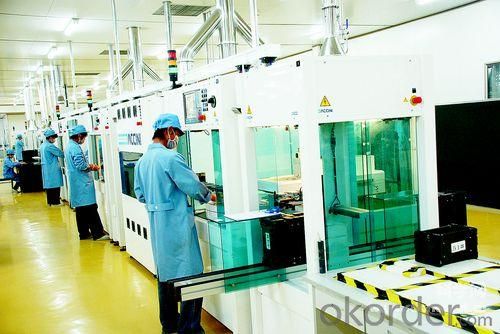
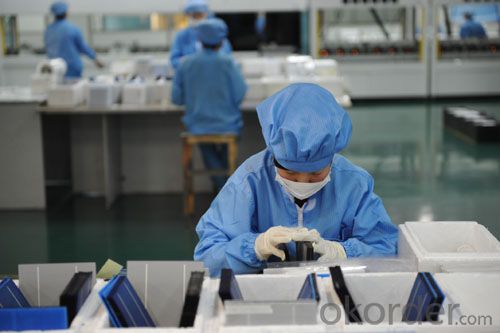
- Q: Can solar cells be used in art installations?
- Yes, solar cells can definitely be used in art installations. They can be integrated into various artistic mediums and designs to provide a sustainable and visually stunning source of energy. This allows artists to create interactive and eco-friendly installations that promote renewable energy and environmental consciousness.
- Q: Can solar cells be used to power communication systems?
- Yes, solar cells can be used to power communication systems. Solar cells are capable of converting sunlight into electricity, which can then be used to power various electronic devices, including communication systems. This is particularly advantageous in remote or off-grid areas where it may be difficult or expensive to establish traditional power infrastructure. Additionally, solar-powered communication systems offer a sustainable and environmentally friendly alternative to relying solely on fossil fuels for energy.
- Q: Can solar cells be used to power electric vehicle charging stations?
- Yes, solar cells can be used to power electric vehicle charging stations. Solar panels convert sunlight into electricity, which can then be used to charge electric vehicles. This is known as solar-powered EV charging infrastructure, and it offers a sustainable and renewable energy solution for electric vehicle owners.
- Q: Can solar cells be used to power remote transportation systems?
- Yes, solar cells can be used to power remote transportation systems. Solar cells are a reliable and sustainable source of renewable energy that can be installed on vehicles or infrastructure to provide power for electric motors, batteries, or other components. This allows remote transportation systems such as electric cars, boats, or drones to operate efficiently without relying on fossil fuels or traditional power grids, making them more environmentally friendly and cost-effective in remote areas.
- Q: Can solar cells be used for powering electric vehicle charging stations with battery storage?
- Yes, solar cells can be used to power electric vehicle charging stations with battery storage. Solar cells convert sunlight into electricity, which can be used to charge electric vehicle batteries directly or stored in batteries for later use. This allows for a cleaner and sustainable way to power electric vehicle charging stations, reducing dependence on fossil fuels.
- Q: Can solar cells be used to power refrigeration systems?
- Yes, solar cells can be used to power refrigeration systems. Solar cells convert sunlight into electricity, which can be used to power various appliances and systems, including refrigeration systems. This method of powering refrigeration systems is environmentally friendly and sustainable.
- Q: Can solar cells be used in powering autonomous vehicles?
- Yes, solar cells can be used in powering autonomous vehicles. Solar panels can be installed on the surface of the vehicle to capture sunlight and convert it into electricity. This renewable energy source can supplement or even replace traditional fuel sources, making autonomous vehicles more sustainable and reducing their carbon footprint.
- Q: Can solar cells be used for powering remote surveillance cameras?
- Yes, solar cells can be used to power remote surveillance cameras. Solar cells convert sunlight into electrical energy, which can be stored in batteries and used to power the cameras. This eliminates the need for a constant electrical supply, making solar-powered surveillance cameras ideal for remote locations where access to electricity may be limited or unavailable.
- Q: How do solar cells work to become the solar energy?
- Solar Energy Materials & Solar Cells is intended as a vehicle for the dissemination of research results on materials science and technology related to photovoltaic, photothermal and photoelectrochemical solar energy conversion.
- Q: Can solar cells be used in parking lots?
- Yes, solar cells can be used in parking lots. They can be installed on canopies or shade structures above parking spaces, or integrated into the ground as solar parking lot tiles. This allows parking lots to generate clean and renewable energy while providing shade for vehicles.
Send your message to us
Tongwei Solar Cells Monocrystalline PV Module Solar Cells
- Loading Port:
- China Main Port
- Payment Terms:
- TT or LC
- Min Order Qty:
- -
- Supply Capability:
- 1000000 pc/month
OKorder Service Pledge
OKorder Financial Service
Similar products
Hot products
Hot Searches
Related keywords
